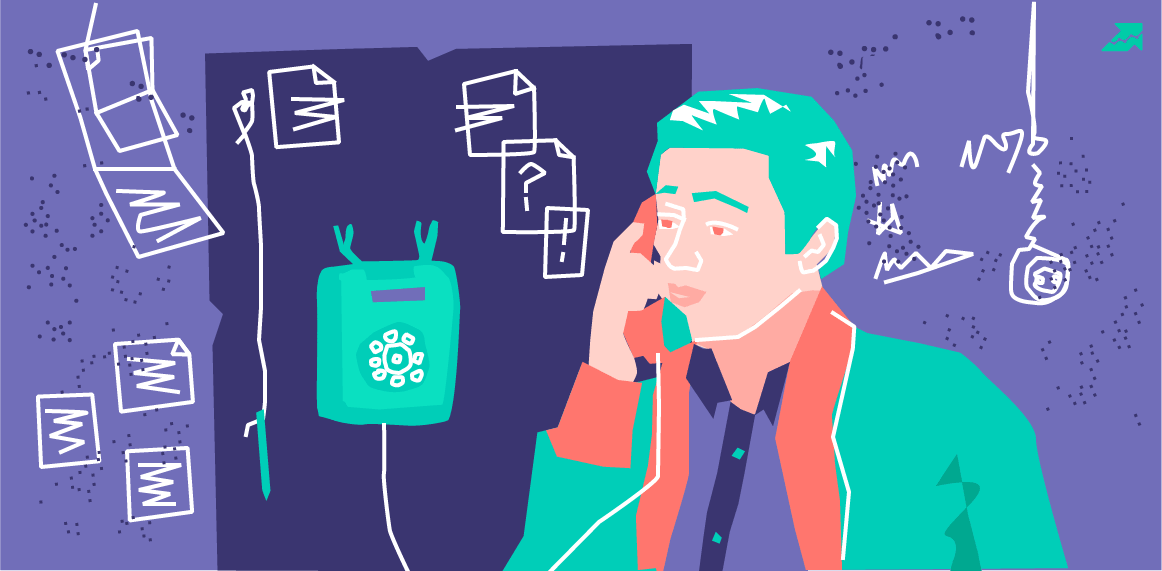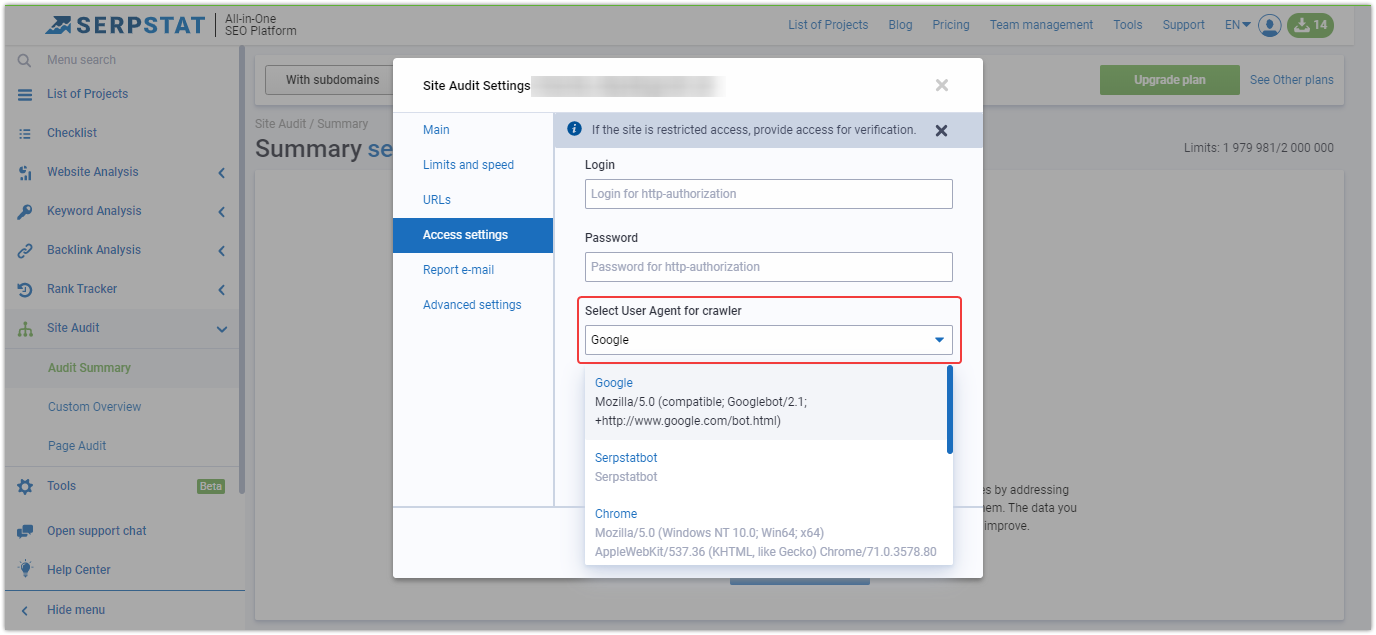Start Exploring Keyword Ideas
Use Serpstat to find the best keywords for your website
Frequently Asked Questions About Site Audit: Customer Support Digest #3


Each issue has points. Points are automatically added to the SDO score if the previously recorded issue has been 100% fixed. SDO doesn't increase if the error is partially fixed.
For example, if you haven't fixed all the errors that were recorded in the report, some points won't be added. For the above reasons, the number of errors may decrease, and the SDO level may remain the same

1. When starting an on-page SEO audit, you need to slow down the scanning speed and turn off its automatic control.
2. Select another crawler in the audit project settings. A site can block a particular type of User Agent, so you need to try changing it in the audit settings.

Previously, SEOs could not check pages with JS scripts for technical issues with our Audit, because it did not see the content there. Now the SEO analysis tool can render JS pages and check them for technical issues! Read more about the update and why you need it below.


The robot starts crawling the site from the main page, following the links deeper into the website. The robot doesn't scan the sitemap (except when the sitemap has been preloaded in the audit settings), as well as pages that use canonical, noindex, and nofollow attributes. This algorithm is as close as possible to how search engine robots work.
An audit is not conducted for pages that are not involved in ranking and are not indexed by search engines.
Types of pages:
1. Non-canonical - pages with a canonical tag with a link to another page. When the canonical tag is on the page, we don't scan this page, but follow the specified page and scan it. You can find such links in the Custom Overview.
2. Closed from indexing - pages with the noindex tag. Such pages will also not be indexed by search engines, and therefore we won't crawl such pages. You can find such links in the Pages closed from indexing using the noindex meta tag or in the Custom Overview.
3. Closed from following - pages with the nofollow tag. When finding a link to pages with the nofollow tag, we don't follow it and therefore don't crawl according to the instructions of this tag. You can find such links in the check. The attribute rel = "nofollow" is used for internal links or in the Custom Overview.
The rel = nofollow attribute is most often used by optimizers if they want search engines not to consider the presence of an outbound link as a weight transfer factor, but the robot will still study the link.
The rel = nofollow tag is set in cases where it is not possible to guarantee the content of pages linked from your site.
Nofollow - prohibits search bots from following links at the page level (both external and internal).
Often flash elements occupy much space, which means that the user can wait a long time for information to load. Also, loading these items consumes a large amount of computer resources. These problems limit the use of flash on the Internet.
Speed up your search marketing growth with Serpstat!
Keyword and backlink opportunities, competitors' online strategy, daily rankings and SEO-related issues.
A pack of tools for reducing your time on SEO tasks.
Discover More SEO Tools
Backlink Cheсker
Backlinks checking for any site. Increase the power of your backlink profile
API for SEO
Search big data and get results using SEO API
Competitor Website Analytics
Complete analysis of competitors' websites for SEO and PPC
Keyword Rank Checker
Google Keyword Rankings Checker - gain valuable insights into your website's search engine rankings
Recommended posts
Cases, life hacks, researches, and useful articles
Don’t you have time to follow the news? No worries! Our editor will choose articles that will definitely help you with your work. Join our cozy community :)
By clicking the button, you agree to our privacy policy.
